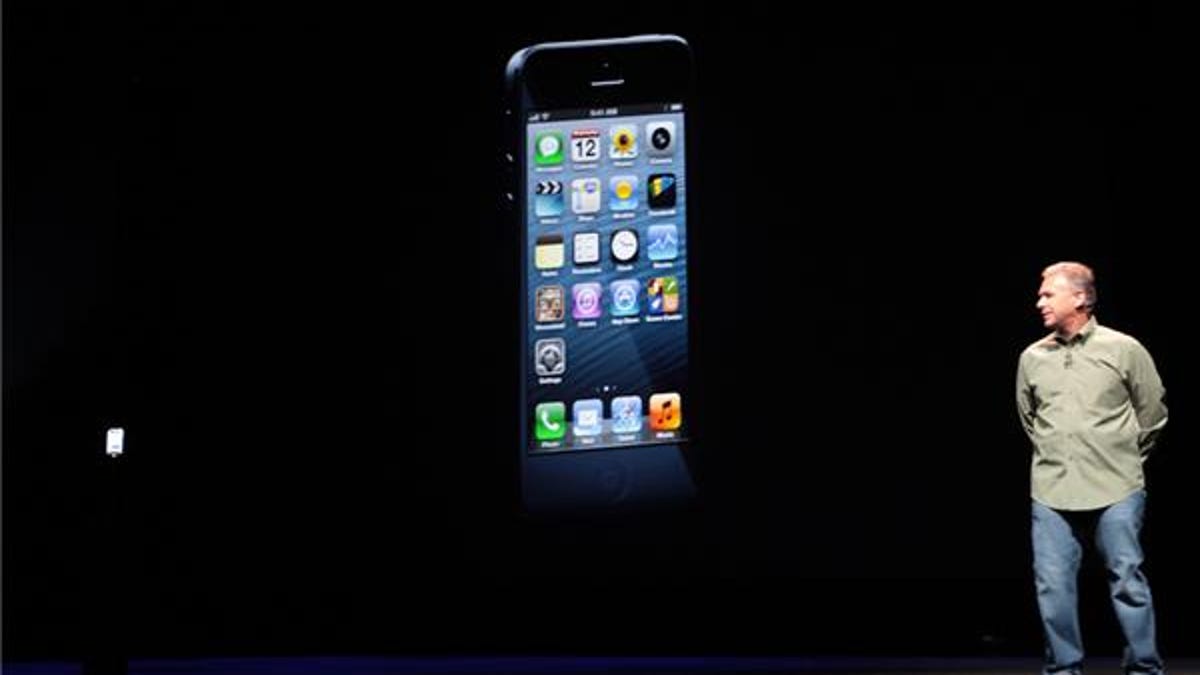iPhone 5 may need third antenna for simultaneous voice-data
The new device isn't capable of supporting simultaneous voice and data on 4G LTE in Sprint and Verizon's networks, but it would be if it had another antenna.

The ghost of Apple's iPhone 4 "antennagate" looks to be haunting the iPhone 5.
The reason simultaneous voice and data capability on 4G LTE isn't possible on Sprint and Verizon simply seems to be the new device's hardware.
CNET reported earlier today that the iPhone 5 models for both Verizon and Sprint don't support data-use and voice simultaneously while on 4G LTE networks -- meaning that if users make a voice call, they'll also need to be on Wi-Fi to pull data inside their apps, including the Safari Web browser. AT&T apparently doesn't have this same problem.
The difference between the devices on the different networks was not mentioned by Apple yesterday during its unveiling of the new iPhone. This is information likely important to those who might be considering which network provider to choose given the addition of 4G LTE.
According to Verizon and Sprint, it was Apple's decision to not support simultaneous voice and data capability on the new smartphone. Other devices -- such as the Galaxy Nexus 4G on Sprint and the Droid Razr M on Verizon -- provide both voice and data at the same time on 4G LTE.
So what's going on here? It's the iPhone 5's lack of a third antenna, according to the New York Times.
Apparently those devices that do support calls and data on Sprint and Verizon have an extra antenna that is able to pull data from the 4G LTE network while the original antenna handles the voice.
But how does AT&T have it? Well, according to the New York Times, 4G LTE technology is so new that when a user makes a phone call, their device has to roll back to the carrier's older CDMA networks. AT&T's older networks support simultaneous voice and data, while Sprint and Verizon's don't.
According to the New York Times, Apple didn't add another antenna because the iPhone 5 already has two antennas for improved reception. With the dual antennas, the device still works on several carriers and Apple didn't have to manufacture a separate phone specifically for Verizon and Sprint. Also, as 4G LTE technology evolves, most likely a third antenna won't be necessary.
This entire debacle harkens back to earlier this year in what was deemed "antennagate." Apple agreed to settle in a class-action lawsuit that targeted antenna performance in its iPhone 4. In that case, if the device was held tightly it would eventually lose some reception -- something that was criticized as being a hardware flaw.
Apple did not weigh in on the matter for three weeks, deciding instead to hold a press conference to address what had been dubbed "antennagate" with a sea of data to show that other phones had similar issues. The company then offered to let people return the phone for a full refund, or claim a complementary case from Apple or third-party case makers -- an offer it kept going for two months. It also issued a software update that changed how the phone determined how many reception bars were displayed.
It's not likely that any of the 4G LTE hardware issues on the iPhone 5 will lead to another antennagate, but it's difficult not to be reminded of it.
CNET has contacted Apple for comment and will update this report when we learn more.
See CNET's full coverage of Apple's iPhone 5 event

